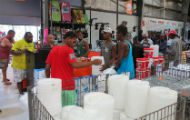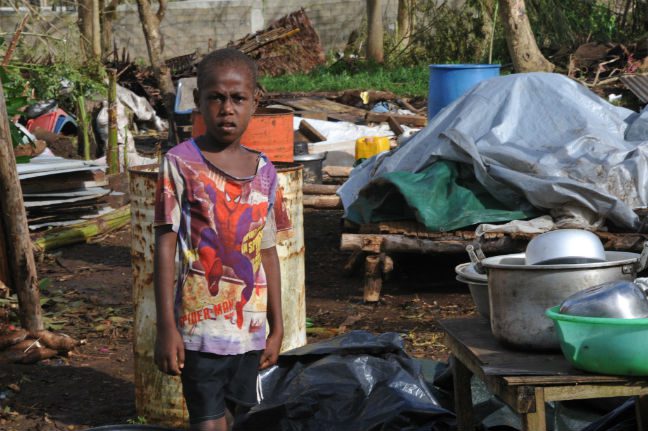
More Oxfam Humanitarian Emergency responders have arrived in Vanuatu as the unconfirmed death toll from Cyclone Pam begins to climb. Oxfam Country Director in Port Vila, Colin Collett van Rooyen, said the situation in Vanuatu was increasingly grim.
“There are more than 100,000 people likely homeless, more than 90% of houses damaged in Port Vila alone, nearly every school destroyed, full evacuation centres, damage to health facilities and the morgue,” Mr Collett van Rooyen said.
“Reports today of catastrophic devastation in Erromango and Tanna Islands in the south with non-concrete buildings completely flattened and the few concrete buildings without roofs confirm that there are still many people in need across the archipelago.”
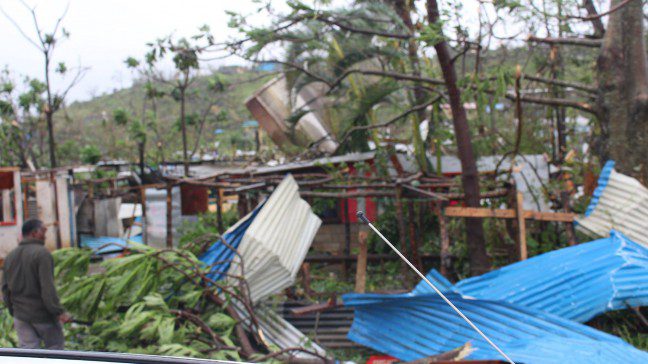
What we know:
- Communications are down across the country and the National Disaster Management Office is unable to receive information from the provinces. Main concerns are people living on the islands of Maewo (population 3,569), Ambae (population 10,407), Pentecost (population 16,843), Efate (65,734 including the capital Port Vila (population 44,000) and on the islands in Tafea Province (population 32,540), which were impacted directly during the afternoon of the 14 March.
- The Government of Vanuatu has declared a State of emergency in Shefa Province. This is likely to be expanded to other provinces, depending on the recommendations of an aerial assessment on the 16 March. The results of the aerial assessment will also trigger the deployment of rapid assessment teams.
- 20 casualties and six fatalities reported so far in central Vila and 44 unconfirmed fatalities reported in Penama province and 14 unconfirmed on Ambae island.
- With more than 250,000 people at risk there is real concern of a potentially high death toll and of enormous destruction, particularly given the traditional housing that is prevalent throughout the islands. Many homes are built with natural and local materials that are extremely vulnerable to strong winds and floods.
- The threat of disease is looming. Vanuatu could face a second emergency with waterborne disease a real risk if the need for clean water, sanitation and hygiene is not addressed rapidly.
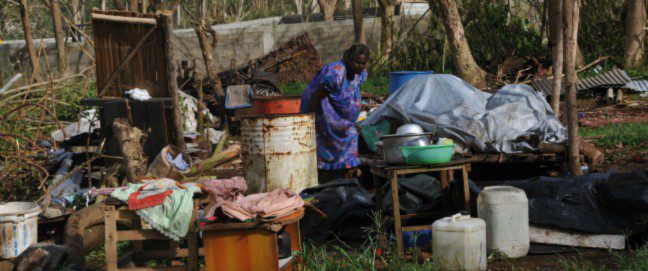
What we’re doing:
Immediate priorities in Vanuatu for Oxfam’s response teams are to provide shelter, clean water and sanitation to people — especially those left homeless. Temporary toilets, water purification tablets, soap and water containers are all vital.
In Vanuatu, Oxfam coordinates the emergency response efforts of the other non-government organisations. We’re working closely with the Government of Vanuatu and other NGO’s to ensure the best possible emergency response. Oxfam and other NGO aid workers arrived today on a RAAF plane carrying 17,500kg of Australian Aid.
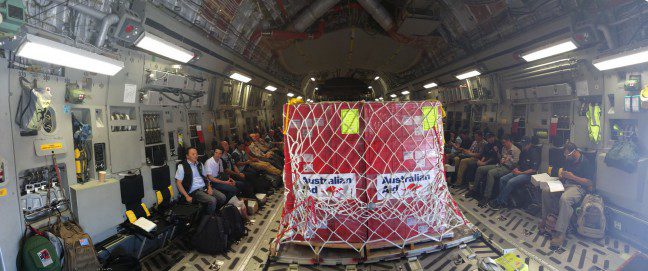
How you can help:
- You can help supply clean water, sanitation supplies and hygiene essentials. Clean water, sanitation and hygiene supplies are urgently needed for those who have lost their homes as well as people in evacuation centres.
- You can help supply food to families in need. There is likely to be urgent food support required to affected populations. The food security and agriculture cluster estimates widespread damage to food and livelihoods across affected islands with the cyclone felling coconut trees and destroying island cabbage, vegetables and fruit trees, fishing infrastructure (canoes, boats, nets), damage to seed stocks and small livestock.
You can help support Oxfam’s response to Cyclone Pam. Please give generously.
